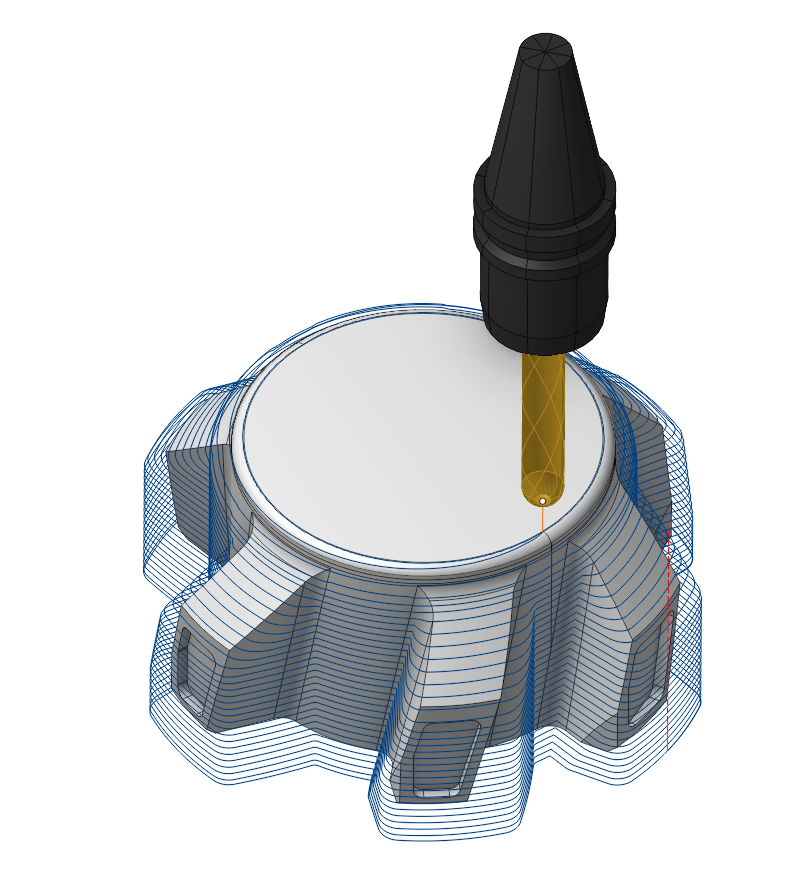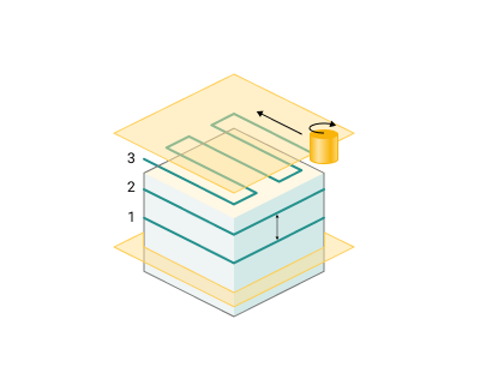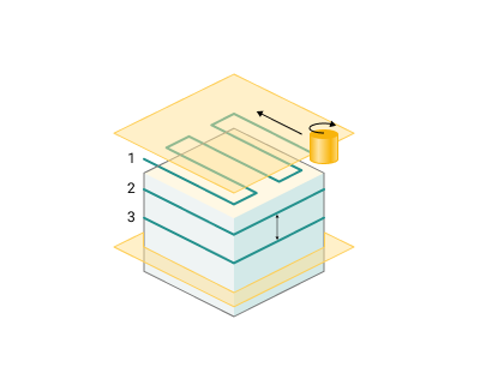3D Helical operation

Application area:
The operation generates continuous helical passes with the given vertical stepover between the top and the bottom level. It is effective when machining slope or vertical surfaces.
Job assignment:
Machining Surfaces.
Select various surfaces of the part as the working task. The system will calculate the trajectory based on the chosen surfaces.
Job Zone. Use the Job Zone to form the passes within or outside the specified 2d containment areas. See more.
Restrict Zone. In addition to Job Zones in system you can use Restrict Zones geometry from curves and edges to specify the workpiece areas that s hould avoid machining in the current operation. See more
Properties. Displays the properties of an element. It is possible to add the stock. You can also call this menu by double clicking on an item in the list.
Delete. Removes an item from the list.
Strategy:
These parameters allows the user to achieve a required toolpath:
Milling Type:
This feature enables users to select the necessary milling direction (climb or conventional) during the toolpath calculation process. See more.
The parameters of the Milling Type are the same. as in the Waterline Roughing operation. See more.
Sorting:
Controls the sequence of toolpath passes during the surface machining .
Step.
Material removed in one pass along the tool axis between the Top and Bottom levels. It i s a vertical distance between any two adjacent complete helix turns. See more. This parameter group works similarly to the Waterline Roughing operation . See more.
Adjust Step:
The parameter changes the tool passes to allow machining to the defined level .
Smooth Radius:
When there is a sudden change of the tool direction, the milling control performs deceleration before starting the turn, and then accelerates again. This fact can lead to vibrations and high tool and milling machine wear. The problem can be solved if the toolpath has very few or no breaks. For this reason, in the system there is the toolpath smoothing function using the defined radius for machining inner or outer corners of the model.
Machining Levels:
It defines the range along tool axis for the machining. These parameters are the same as in the Waterline roughing operation. See more.
Trimming:
Allows for the skipping of surfaces not intended for machining . The parameters of Trimming are the same as in the Waterline Roughing operation. See more.
Transformations:
Parameter's kit of operation, which allow to execute converting of coordinates for calculated within operation the trajectory of the tool. See more
See also:
Operations for the 3-axes milling

